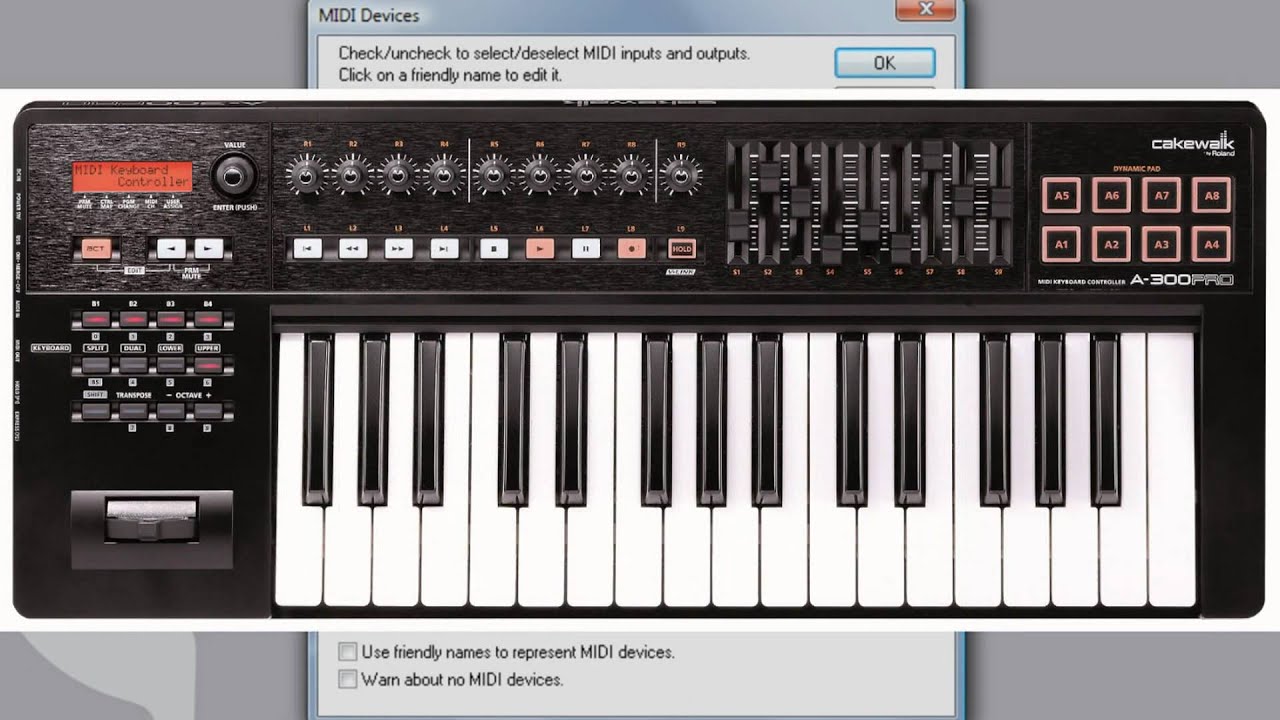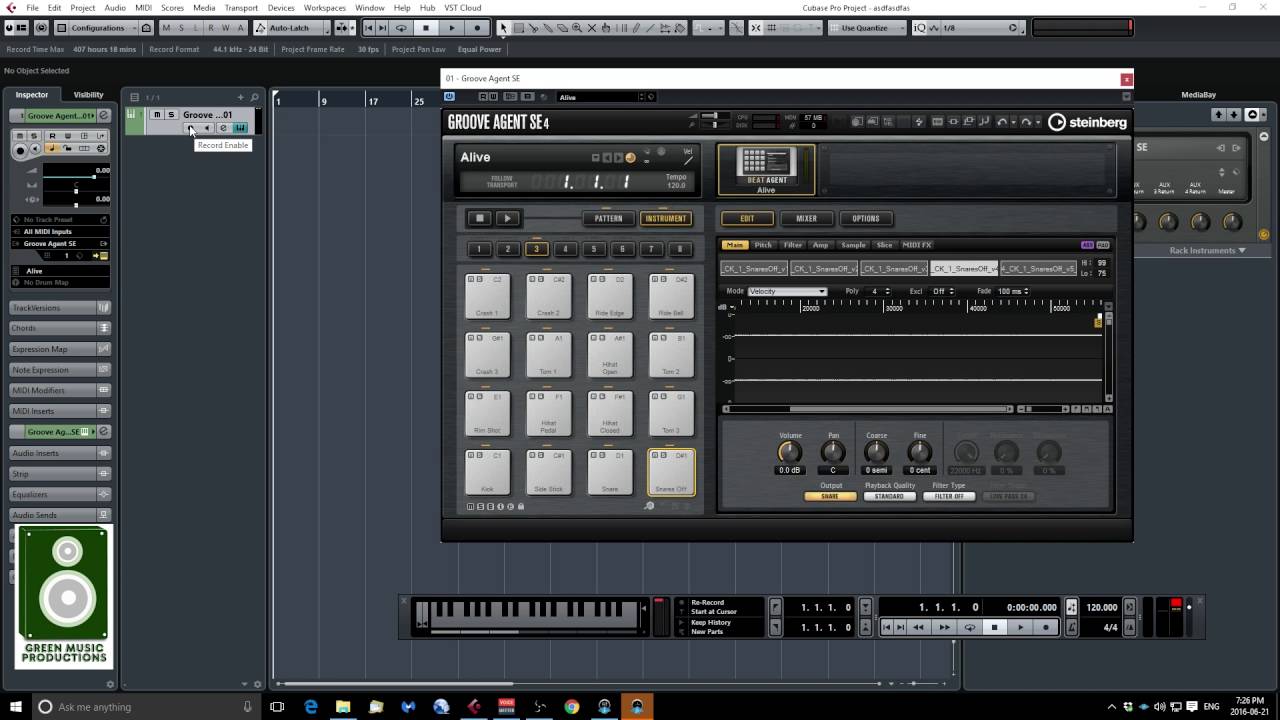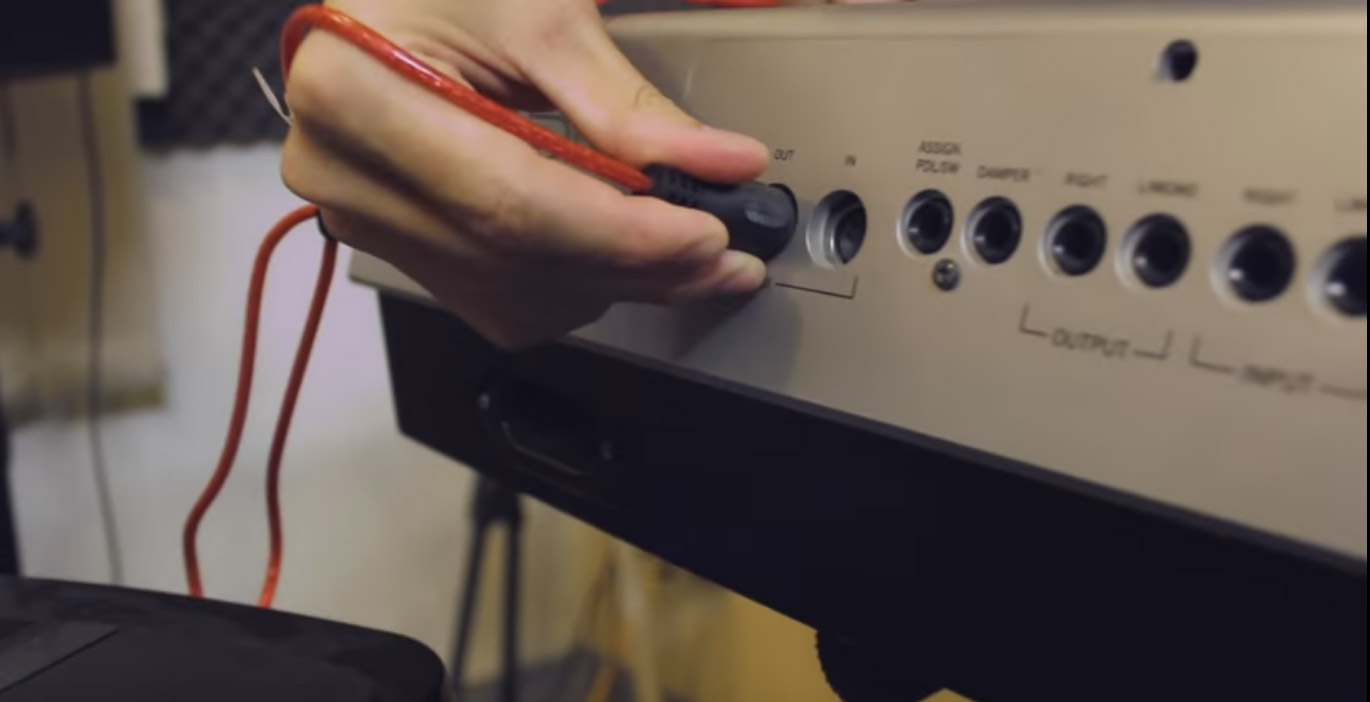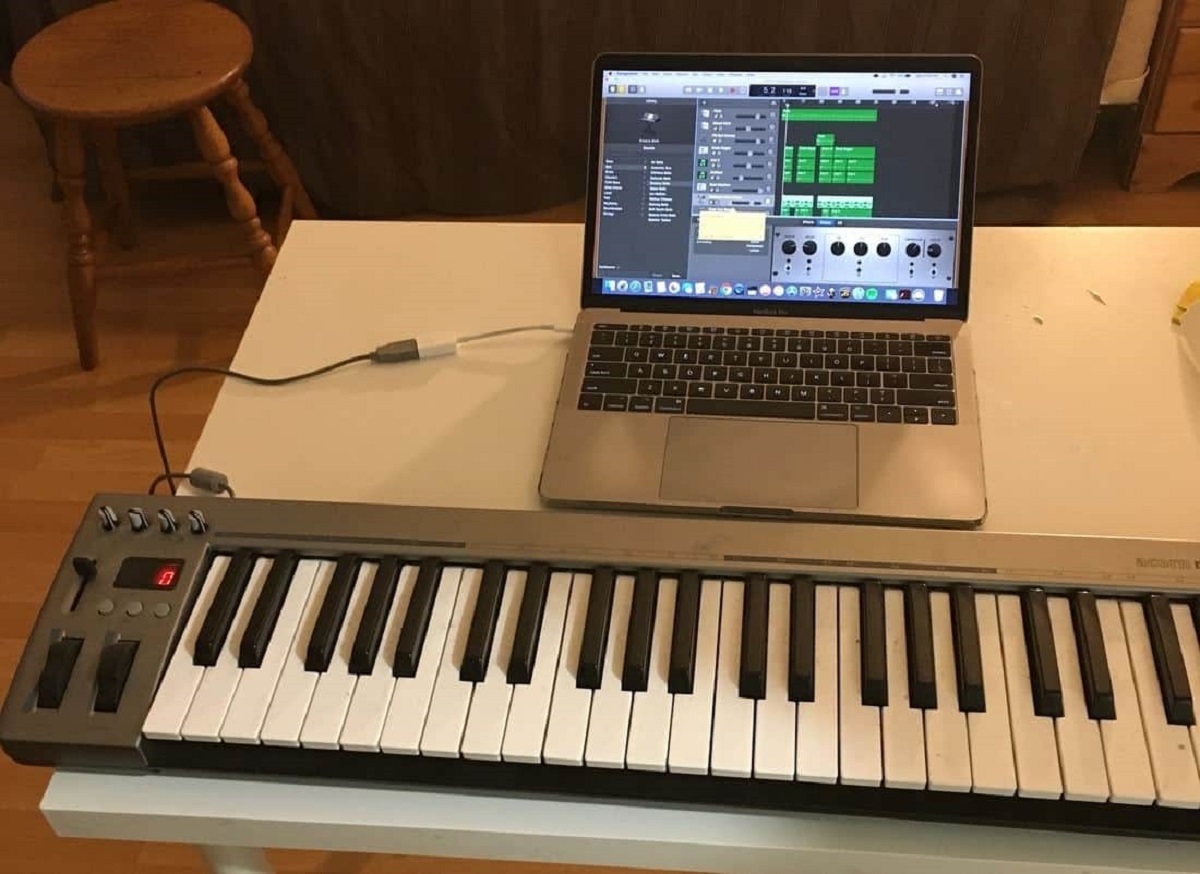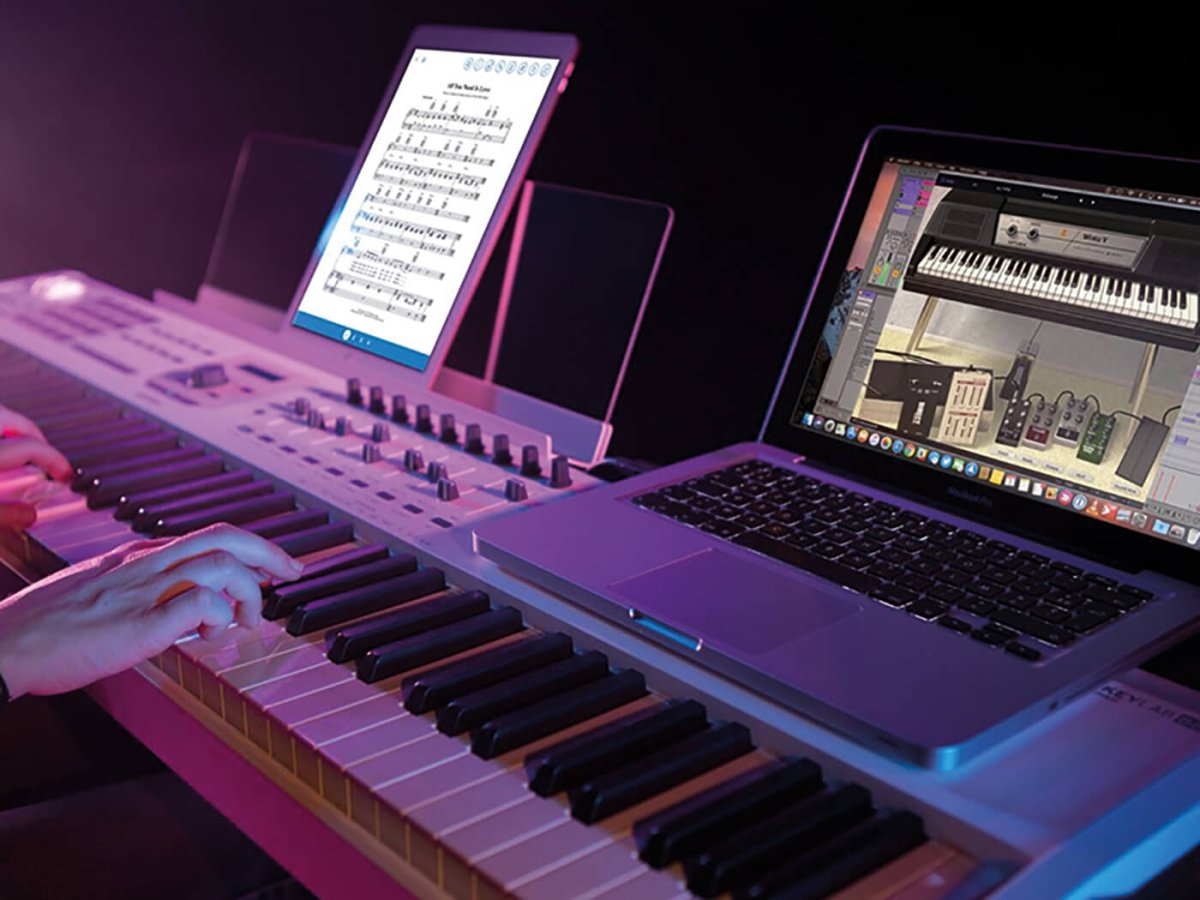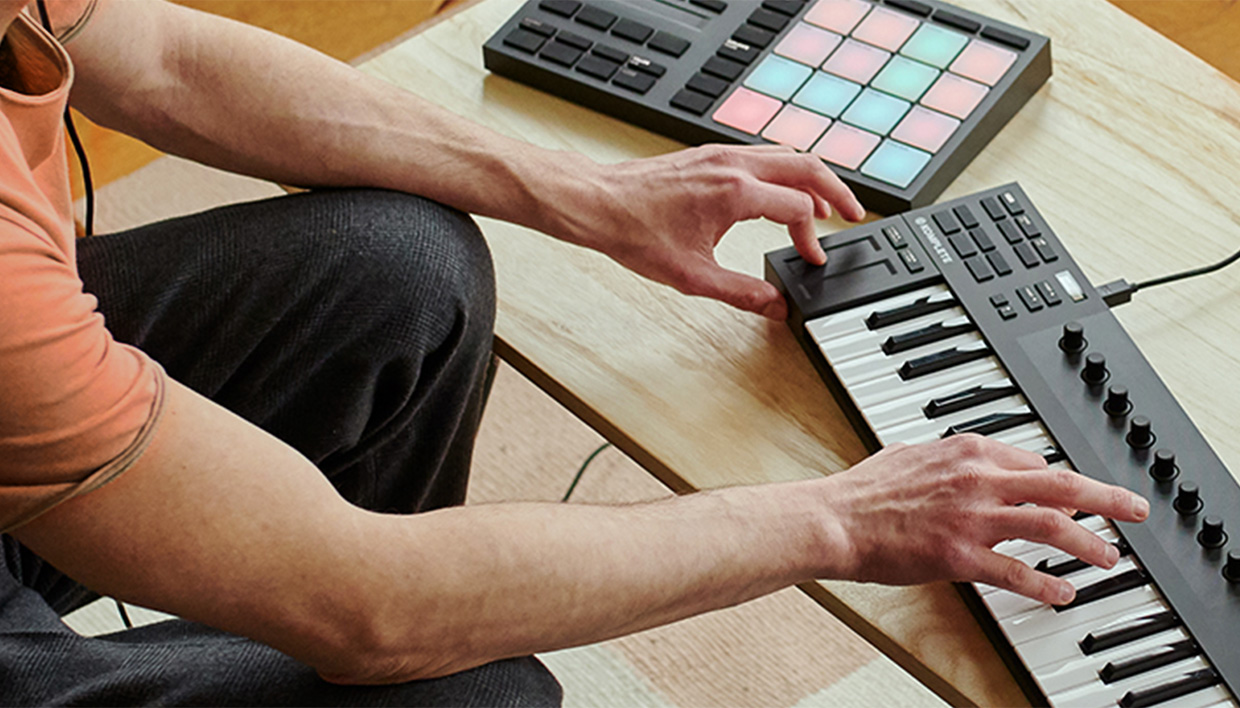Introduction
So, you've got yourself a MIDI keyboard and you're eager to dive into the world of music production using Sonar. Congratulations! MIDI keyboards are fantastic tools for creating music, and when paired with a powerful digital audio workstation like Sonar, the possibilities are endless. In this guide, we'll walk you through the process of setting up your MIDI keyboard in Sonar, assigning MIDI inputs, mapping MIDI controls, recording MIDI with your keyboard, and editing MIDI notes. By the end of this tutorial, you'll be well-equipped to harness the full potential of your MIDI keyboard within Sonar.
Whether you're a seasoned musician or just starting out, using a MIDI keyboard in Sonar can significantly enhance your music production workflow. With its intuitive interface and robust features, Sonar provides a seamless platform for integrating MIDI keyboards into your creative process. From playing and recording melodies to tweaking virtual instrument parameters, your MIDI keyboard can serve as a versatile tool for unleashing your musical ideas.
In the following sections, we'll delve into the specifics of setting up and utilizing your MIDI keyboard in Sonar. We'll cover the essential steps for configuring your MIDI keyboard, customizing MIDI controls, and leveraging its capabilities to record and edit MIDI data. By understanding these fundamental aspects, you'll be able to harness the expressive potential of your MIDI keyboard and seamlessly integrate it into your music production endeavors.
Now, let's embark on this journey together as we explore the intricacies of using a MIDI keyboard in Sonar. Whether you're aiming to lay down captivating melodies, craft intricate arrangements, or experiment with sound design, your MIDI keyboard is poised to be a valuable asset in your creative arsenal. Let's dive in and unlock the boundless possibilities that await when you merge the tactile artistry of a MIDI keyboard with the dynamic capabilities of Sonar.
Setting Up Your MIDI Keyboard in Sonar
Before you can start making music with your MIDI keyboard in Sonar, you need to ensure that it is properly set up and recognized by the software. The first step is to connect your MIDI keyboard to your computer using a USB cable or MIDI interface. Once connected, launch Sonar and navigate to the preferences or settings menu to configure your MIDI keyboard.
Within Sonar’s preferences, locate the MIDI devices or external controllers section. Here, you should be able to select your MIDI keyboard from the list of available devices. If your MIDI keyboard is not automatically detected, you may need to install the appropriate drivers provided by the manufacturer. Once your MIDI keyboard is recognized by Sonar, you can proceed to configure its settings to ensure seamless integration with the software.
Next, you’ll want to verify that your MIDI keyboard is transmitting data to Sonar. To do this, play a few notes on the keyboard and check if Sonar registers the incoming MIDI data. You can typically monitor MIDI input activity through a dedicated indicator within Sonar’s interface. If you notice that Sonar is not receiving MIDI input from your keyboard, double-check the connections and settings to troubleshoot any potential issues.
Additionally, it’s important to confirm that the MIDI channels on your keyboard align with the MIDI channels used in Sonar. This ensures that the MIDI data from your keyboard is properly routed to the intended tracks and virtual instruments within Sonar. By matching the MIDI channels, you can avoid potential conflicts and ensure that your MIDI keyboard communicates effectively with the software.
Once you’ve successfully set up your MIDI keyboard in Sonar, you’re ready to embark on a musical journey filled with creativity and expression. The seamless integration of your MIDI keyboard with Sonar opens up a world of possibilities for composing, performing, and producing music. With the technical groundwork laid out, you can now focus on harnessing the full potential of your MIDI keyboard within Sonar’s versatile environment.
Assigning MIDI Inputs
Once your MIDI keyboard is connected and recognized by Sonar, the next crucial step is to assign MIDI inputs to the tracks within your project. This process enables Sonar to receive MIDI data from your keyboard and route it to the appropriate tracks for recording or triggering virtual instruments. Assigning MIDI inputs ensures that your MIDI keyboard becomes an integral part of the music creation process within Sonar.
To assign MIDI inputs in Sonar, begin by opening the project in which you intend to use your MIDI keyboard. Navigate to the track or instrument that you want to play or record using your MIDI keyboard. Within the track’s settings or properties, look for the input selection options. Here, you should be able to specify the MIDI input source for the track, which will typically include your MIDI keyboard as a selectable input device.
After selecting your MIDI keyboard as the input source for the track, Sonar will be primed to receive MIDI data transmitted from your keyboard. This means that when you play the MIDI keyboard, the notes and controller data will be captured by Sonar and routed to the designated track for further processing or playback. Assigning MIDI inputs effectively establishes the communication link between your MIDI keyboard and Sonar, paving the way for seamless musical interaction.
It’s important to note that you can assign different MIDI inputs to multiple tracks within your project, allowing for simultaneous control and recording from various MIDI sources, including keyboards, controllers, and other MIDI-enabled devices. This flexibility empowers you to orchestrate complex arrangements, layer multiple instrument parts, and capture expressive performances using a diverse array of MIDI input sources.
By adeptly assigning MIDI inputs in Sonar, you can unlock the full potential of your MIDI keyboard as a dynamic and responsive tool for shaping musical ideas. Whether you’re triggering virtual instruments, recording intricate melodies, or manipulating MIDI effects, the seamless integration of MIDI inputs within Sonar empowers you to craft compelling musical compositions with precision and fluidity.
Mapping MIDI Controls
Mapping MIDI controls in Sonar allows you to customize the behavior of your MIDI keyboard and other MIDI-enabled devices within the software. This process involves assigning specific MIDI messages, such as note data, modulation, pitch bend, and control change messages, to various parameters and functions within Sonar. By mapping MIDI controls, you can tailor the behavior of your MIDI keyboard to suit your workflow, performance style, and production requirements.
To begin mapping MIDI controls in Sonar, access the software’s MIDI control settings or preferences. Here, you’ll typically find a dedicated section for mapping MIDI controllers, which enables you to define the relationships between MIDI messages and software parameters. Depending on your creative objectives, you can map MIDI notes to trigger specific actions, assign modulation and pitch bend to affect instrument parameters, and link control change messages to manipulate virtual instrument settings.
One common application of MIDI control mapping involves configuring the knobs, sliders, and buttons on your MIDI keyboard to interact with Sonar’s virtual instruments and effects. This level of customization empowers you to sculpt sounds, adjust parameters, and modulate effects in real-time, adding an expressive and tactile dimension to your music production process. By mapping MIDI controls, your MIDI keyboard becomes a versatile interface for shaping and manipulating the sonic elements within Sonar.
Furthermore, mapping MIDI controls can extend beyond traditional performance and recording tasks. In Sonar, you can assign MIDI controls to navigate the software interface, trigger transport functions, and engage with mixing and automation parameters. This integration enables you to streamline your workflow, enhance hands-on control, and imbue your music-making experience with a sense of immediacy and responsiveness.
As you delve into the realm of MIDI control mapping, you’ll discover the boundless potential for personalizing your interaction with Sonar and infusing your musical expressions with nuanced articulation. Whether you’re crafting intricate soundscapes, shaping dynamic performances, or sculpting textures through real-time manipulation, the ability to map MIDI controls in Sonar empowers you to orchestrate your creative vision with precision and fluidity.
Recording MIDI with Your Keyboard
Recording MIDI with your keyboard in Sonar opens up a world of possibilities for capturing musical ideas, performances, and expressive nuances. Whether you’re laying down melodies, creating intricate arrangements, or experimenting with improvisation, Sonar provides a comprehensive platform for seamlessly capturing MIDI data from your keyboard and integrating it into your projects.
To initiate MIDI recording with your keyboard in Sonar, start by creating a new MIDI track within your project. This track will serve as the destination for capturing the MIDI data transmitted by your keyboard. Once the MIDI track is in place, ensure that the input source is set to your MIDI keyboard, allowing Sonar to receive and record the MIDI data as you play.
Before commencing the recording process, it’s beneficial to configure the recording parameters, such as the quantization settings, metronome options, and recording mode. These settings can influence the precision and feel of the recorded MIDI performance, aligning it with the rhythmic grid or allowing for more organic, freeform expression, depending on your preferences.
Once the recording parameters are tailored to your liking, you’re ready to capture MIDI data from your keyboard in Sonar. Press the record button, and as you play your keyboard, Sonar will diligently capture the MIDI notes, velocities, and controller data, preserving the essence of your performance within the MIDI track. This seamless recording process ensures that your musical expressions are faithfully transcribed into Sonar’s digital domain, ready for further refinement and creative exploration.
Notably, Sonar’s versatile recording capabilities extend beyond straightforward MIDI note capture. The software empowers you to record MIDI automation, capturing real-time modulations, parameter adjustments, and expressive gestures performed on your MIDI keyboard. This depth of recording functionality allows for the preservation of dynamic nuances and articulations, enriching your musical productions with a sense of organic movement and emotive character.
By leveraging Sonar’s intuitive MIDI recording features, you can effortlessly document your musical inspirations, refine performances, and weave intricate tapestries of sound with the expressive capabilities of your MIDI keyboard. Whether you’re crafting intricate compositions, capturing spontaneous improvisations, or layering rich textures, the process of recording MIDI with your keyboard in Sonar serves as a gateway to capturing and immortalizing your musical creativity.
Editing MIDI Notes
Once you’ve recorded MIDI performances with your keyboard in Sonar, the software provides a robust set of tools for editing and refining the captured MIDI notes. Whether you’re fine-tuning the timing of individual notes, adjusting velocities for nuanced dynamics, or restructuring entire musical passages, Sonar’s MIDI editing capabilities empower you to sculpt and perfect your musical ideas with precision and creativity.
To begin editing MIDI notes in Sonar, navigate to the MIDI track containing the recorded performance from your keyboard. Here, you can access the MIDI editor, a comprehensive workspace that allows for detailed manipulation of MIDI notes, velocities, and other musical data. Within the MIDI editor, you can visually inspect the recorded MIDI notes, their durations, and their positions relative to the musical grid, providing a clear overview of the captured performance.
Sonar’s MIDI editing tools enable you to quantize MIDI notes, aligning them to the rhythmic grid with adjustable strength and resolution. This feature is invaluable for refining the timing of recorded performances, ensuring that the musical phrases exhibit a precise rhythmic feel while preserving the organic nuances of the original performance. Additionally, you can adjust the velocities of individual MIDI notes, shaping the dynamics and expressive qualities of the music to evoke the desired emotional impact.
Beyond basic timing and velocity adjustments, Sonar facilitates comprehensive MIDI note editing, allowing you to transpose, duplicate, delete, and rearrange MIDI notes to sculpt the musical arrangement. This level of control enables you to refine melodies, harmonies, and rhythmic patterns, fostering a creative environment where musical ideas can be reshaped and evolved with ease.
Furthermore, Sonar’s MIDI editing capabilities extend to intricate piano roll functionality, providing a visual representation of MIDI notes and their associated parameters. This intuitive interface allows for precise manipulation of note lengths, pitch bends, and modulation data, offering a canvas for detailed musical expression and refinement.
By harnessing Sonar’s powerful MIDI editing tools, you can elevate your musical compositions, performances, and arrangements to new heights of precision and artistry. Whether you’re correcting imperfections, crafting intricate musical passages, or exploring innovative sonic landscapes, the process of editing MIDI notes in Sonar empowers you to shape and refine your musical visions with unparalleled control and finesse.
Conclusion
As you conclude your exploration of using a MIDI keyboard in Sonar, it’s evident that the integration of these tools opens up a myriad of opportunities for music creation, performance, and production. By following the steps outlined in this guide, you’ve gained valuable insights into setting up your MIDI keyboard, assigning MIDI inputs, mapping MIDI controls, recording MIDI performances, and editing MIDI notes within Sonar. Armed with this knowledge, you are well-equipped to harness the expressive potential of your MIDI keyboard and seamlessly integrate it into your music production endeavors.
Through the process of setting up your MIDI keyboard in Sonar, you’ve established a direct line of communication between your hardware instrument and the software environment, laying the foundation for a seamless creative workflow. By assigning MIDI inputs, you’ve ensured that Sonar receives and processes MIDI data from your keyboard, enabling you to interact with virtual instruments and record performances with ease.
Mapping MIDI controls has empowered you to customize the behavior of your MIDI keyboard within Sonar, unlocking a realm of expressive possibilities for shaping sounds, modulating effects, and engaging with the software interface. This level of customization fosters a deeply personal and tactile approach to music production, enhancing your creative interactions with Sonar’s versatile features.
Recording MIDI performances with your keyboard in Sonar has allowed you to capture your musical ideas with precision and fluidity, preserving the essence of your performances within the digital realm. The ability to seamlessly document your musical expressions paves the way for further exploration, refinement, and creative evolution within your projects.
Lastly, the process of editing MIDI notes in Sonar has provided you with a comprehensive set of tools for refining and sculpting your recorded performances, offering precise control over timing, dynamics, and musical arrangement. This level of detailed manipulation empowers you to shape your musical visions with unparalleled finesse, ensuring that your creative ideas are realized with clarity and artistry.
As you continue your journey with Sonar and your MIDI keyboard, remember that the fusion of technology and artistry is at the heart of music production. The seamless integration of your MIDI keyboard within Sonar’s dynamic environment invites you to explore, experiment, and express yourself in ways that transcend traditional boundaries. Embrace the boundless possibilities that await as you merge the tactile artistry of a MIDI keyboard with the dynamic capabilities of Sonar, and let your musical creativity flourish.







